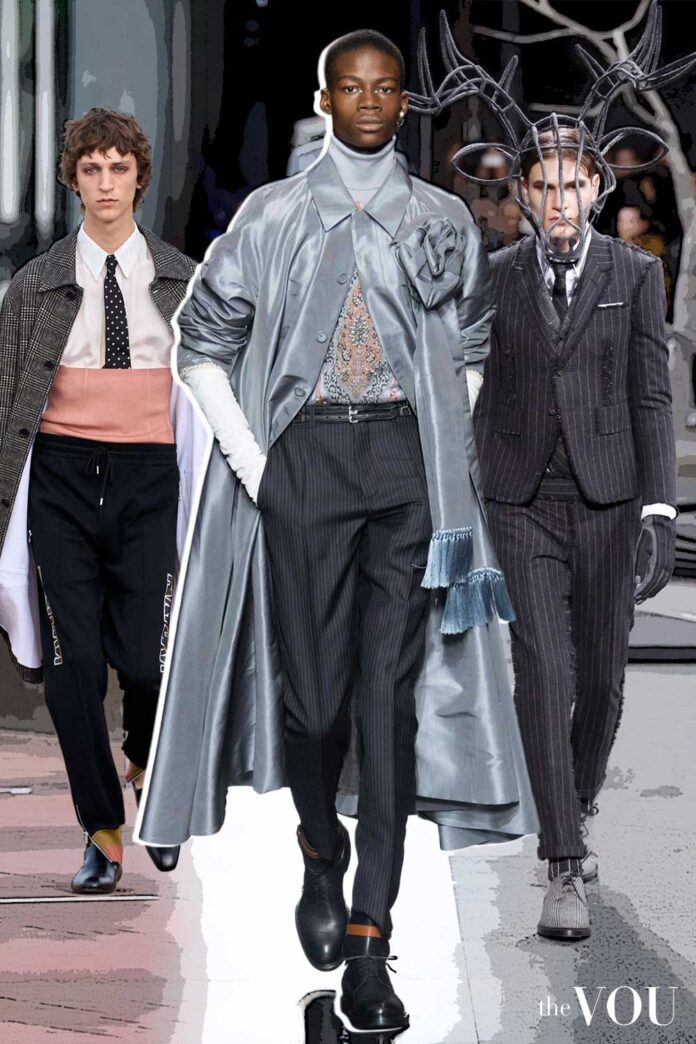In the ever-evolving world of men’s fashion, two terms often spark intrigue and confusion: avant-garde and haute couture.
While both represent pinnacles of sartorial creativity, they differ significantly in their approach, purpose, and execution.
This comprehensive guide delves into the realm of avant-garde fashion, its distinction from haute couture, and its unique place in menswear.
What is Avant Garde?
Avant Garde describes an experimental and innovative approach to design and styling that challenges established fashion styles, traditional silhouettes, the use of conventional materials, and cultural understandings of what fashion can be.
Like an artistic rebellion within the fashion industry, Avant-garde intends to expand the boundaries of fashion as a form of cultural and artistic expression and question the status quo.
Whether it is the garment’s structural composition or how it is presented and accessorised, Avant-garde fashion aims to provoke thought, evoke emotion, and invite interpretation.
In menswear, Avant-Garde experimental designs and novel styling approaches push boundaries, challenge conventions, and redefine the very concept of clothing.
At its core, avant-garde fashion is characterised by:
- Unconventional silhouettes and proportions
- Innovative use of materials and textures
- Conceptual designs that often blur the line between art and fashion
- A disregard for traditional notions of wearability or practicality
Avant Garde Fashion Roots
The term “Avant-garde” originates from French, where “avant” means before and “garde” means guard – the equivalent of “vanguard” in English – signifying a generation of designers carrying the torch or taking over from the old guard.
The avant-garde movement in fashion has its origins in early 20th-century art movements, particularly Dadaism and Surrealism.
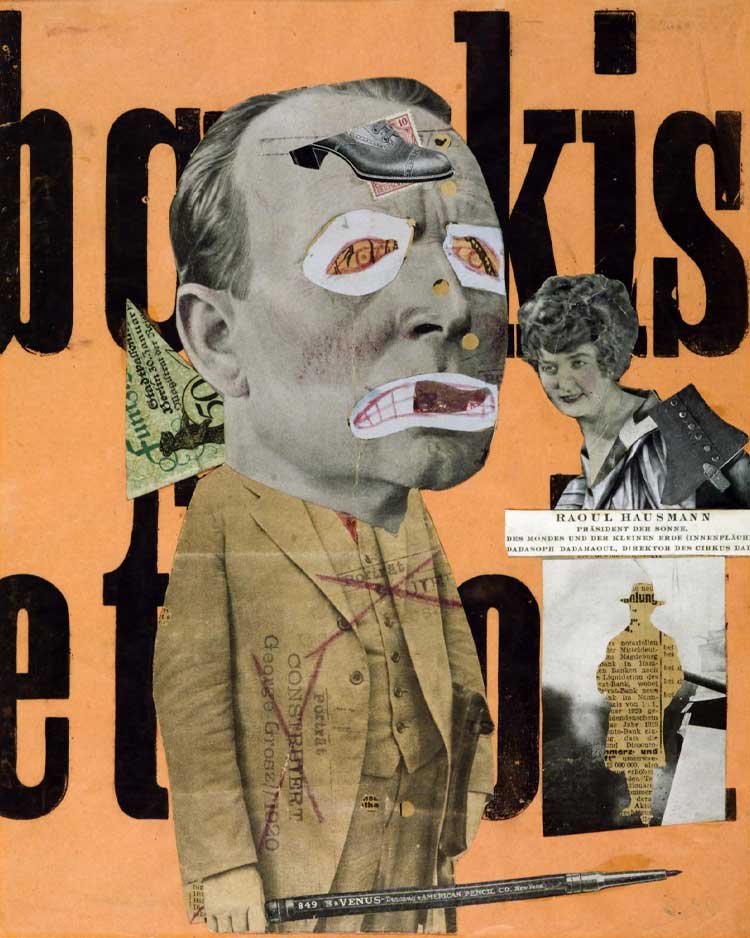
These artistic revolutions sought to challenge established norms and provoke thought, principles that avant-garde fashion designers would later adopt.
In menswear, the avant-garde movement gained significant traction in the 1960s and 1970s.
Designers like Pierre Cardin and Rudi Gernreich introduced futuristic elements and unisex designs that defied traditional masculine aesthetics.
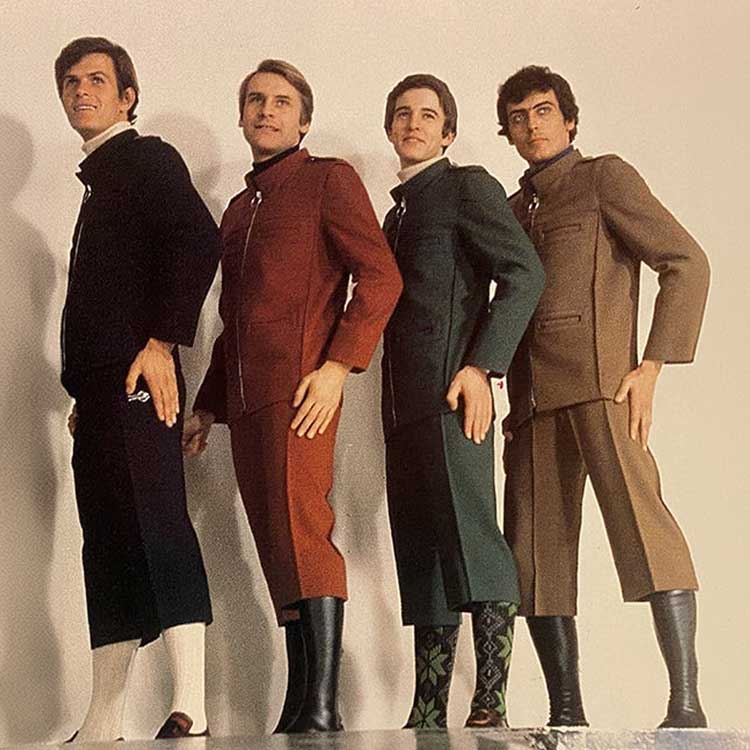
Cardin’s space-age inspired collections, featuring geometric shapes and novel materials, exemplified how avant-garde fashion could push menswear into new territories.
Designer Rei Kawakubo of Comme des Garçons famously challenged the form-fitting ideals of menswear in the 1980s with her oversized, asymmetrical creations as early examples of Avant-Garde men’s fashion.
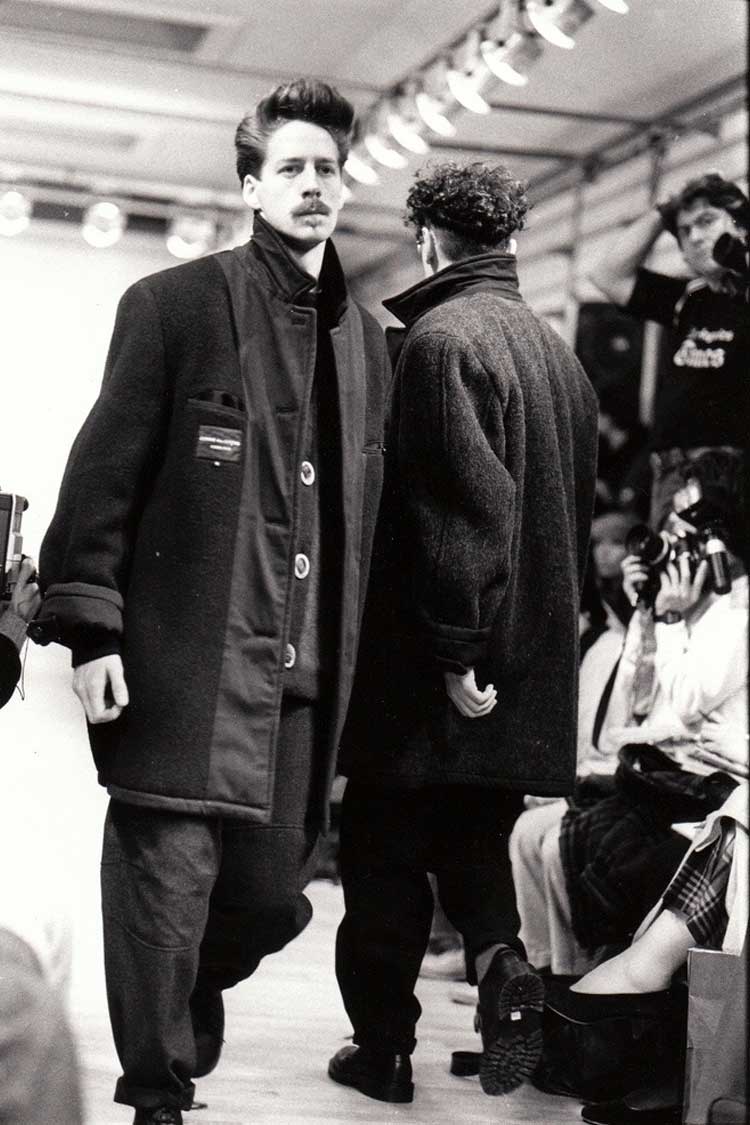
Avant Garde in the 21st Century
Today, Avant-garde fashion is theatrical where designers express their creative visions in 4 main areas, namely material innovation, sustainability, gender-fluidity, and technology integration.
Material Innovation
On such area is related to material innovation. The use of unconventional materials is a hallmark of avant-garde fashion.
For example, Kosuke Tsumura, the designer behind Final Home, created a coat made from nylon with multiple pockets that could be filled with newspaper for insulation, challenging traditional notions of menswear functionality and adaptability.
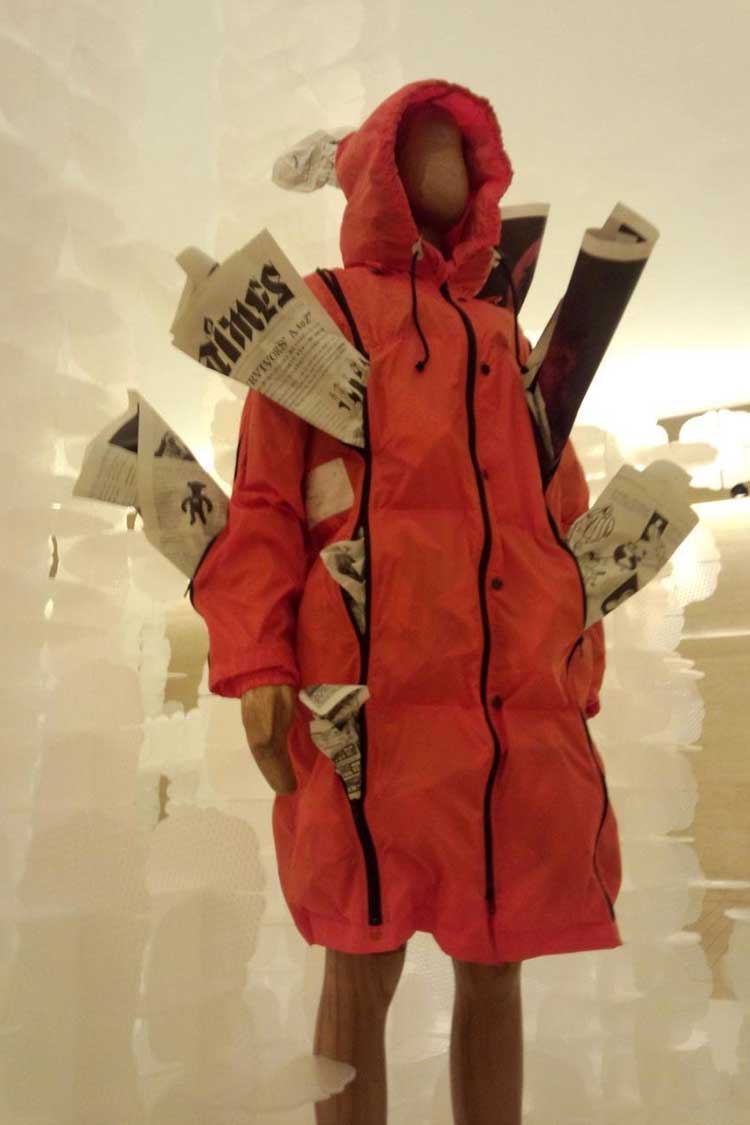
Craig Green, a British menswear designer, has used unconventional materials like wooden structures and parachute-like fabrics in his collections.
His Spring/Summer 2015 collection featured garments constructed from layers of cardboard-like material, pushing the boundaries of what constitutes ‘fabric’ in menswear.
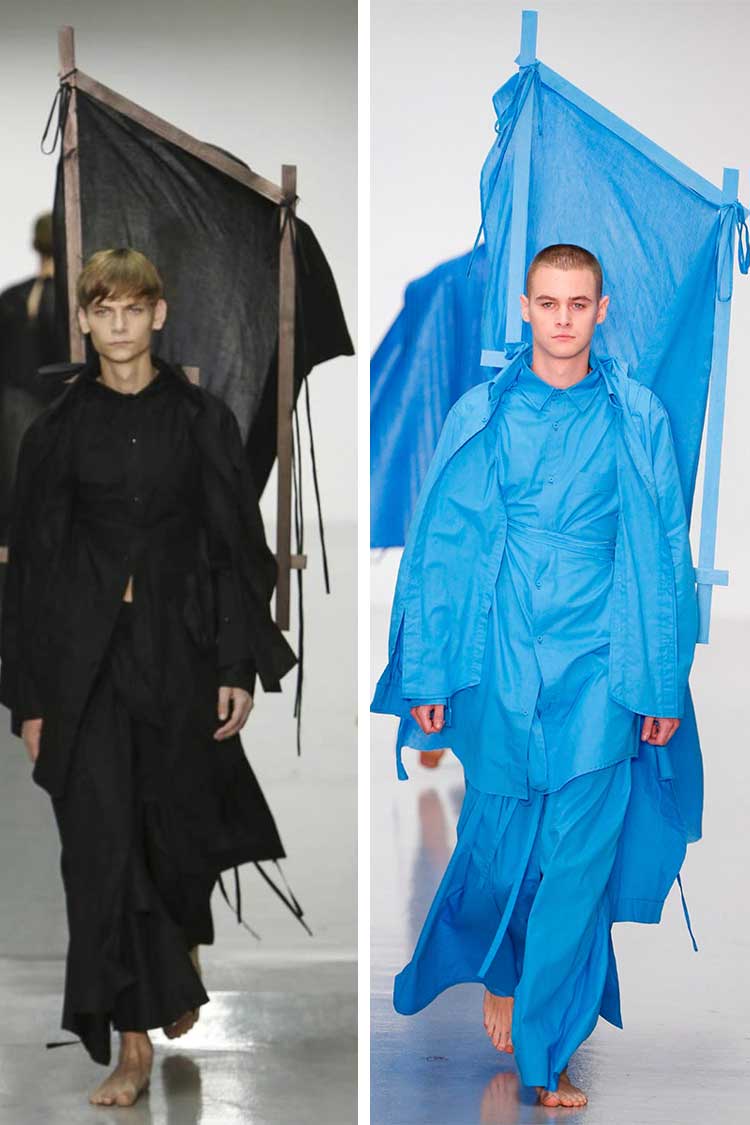
Similarly, Issey Miyake’s revolutionary pleating techniques have redefined how fabric interacts with the male form.
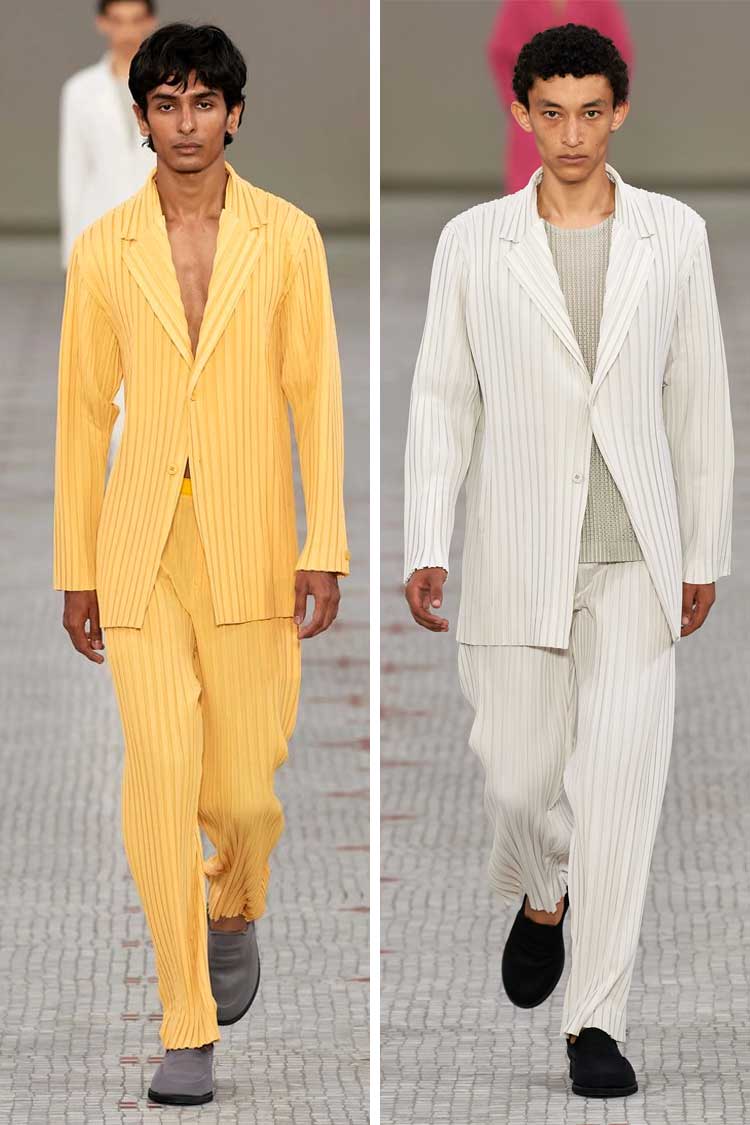
Sustainability
Avant-garde designers are also the forefront of sustainable fashion.
Brands like Maharishi use recycled military fabrics to create thought-provoking, eco-conscious menswear.
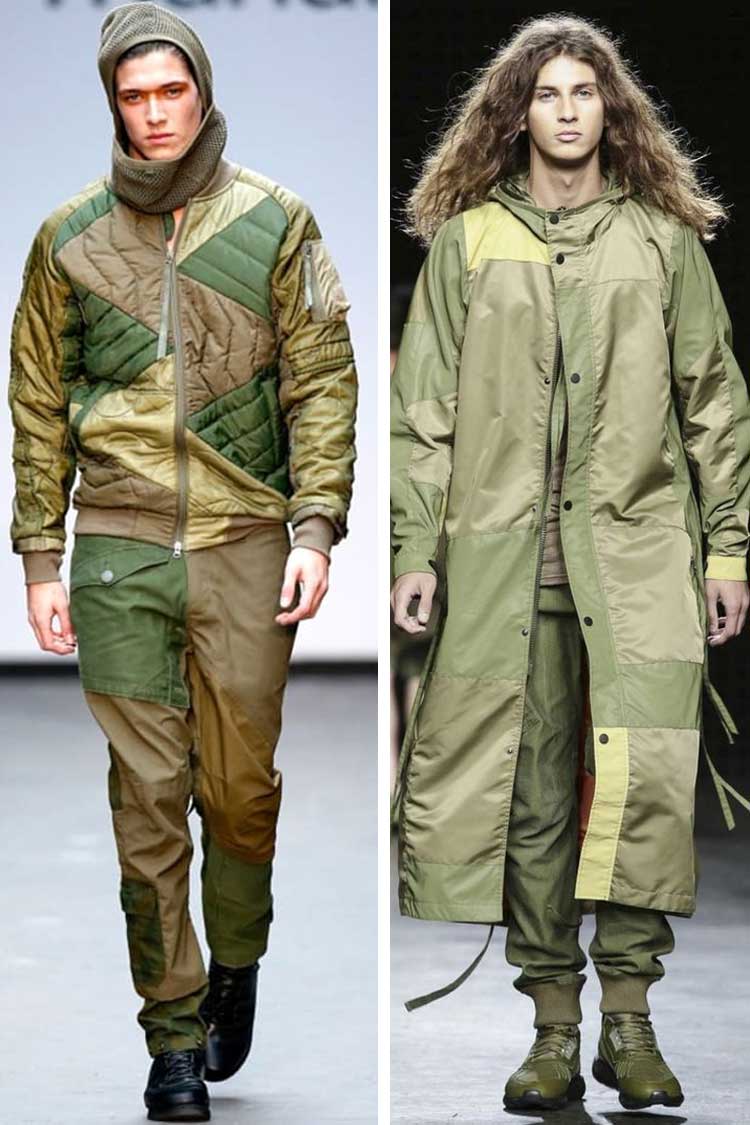
This approach not only challenges aesthetic norms but also questions the fashion industry’s environmental impact.
Gender Fluidity
Avant-garde menswear often blurs gender lines.
Designers like Rad Hourani and J.W. Anderson create collections that challenge traditional notions of masculinity, offering a more fluid approach to men’s fashion.
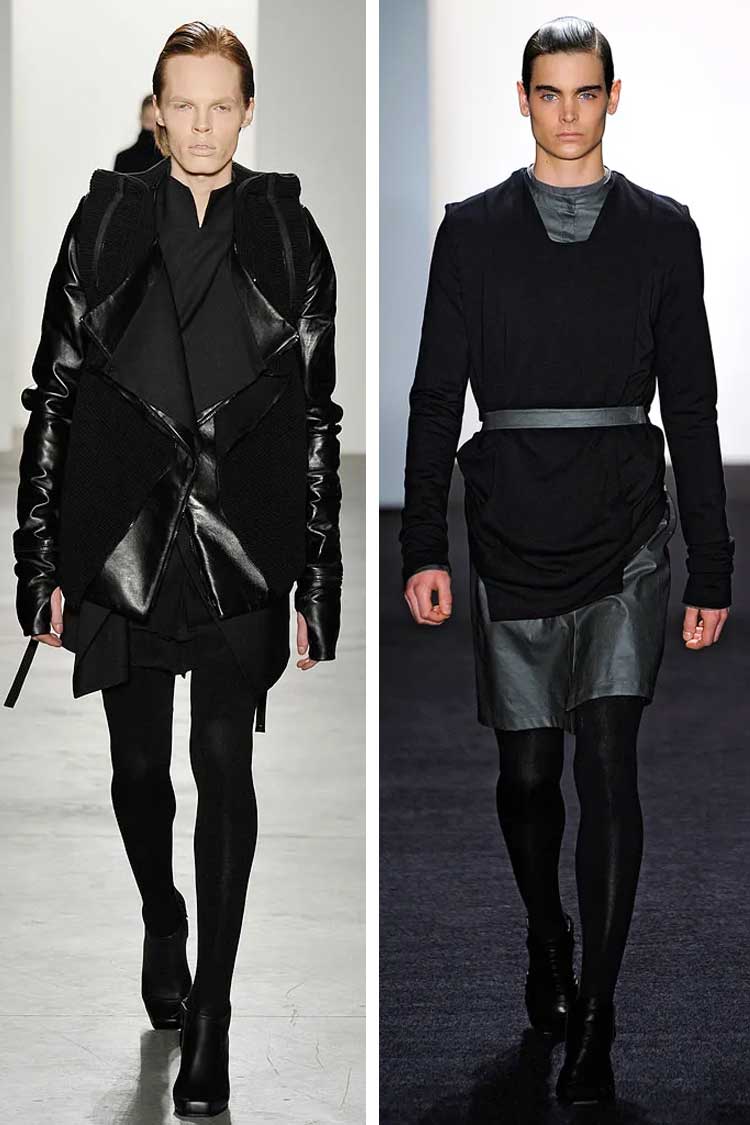
Technology Integration
The integration of technology in clothing is another frontier for avant-garde menswear.
Hussein Chalayan, for instance, has created garments that transform through remote control, merging fashion with performance art and technology.
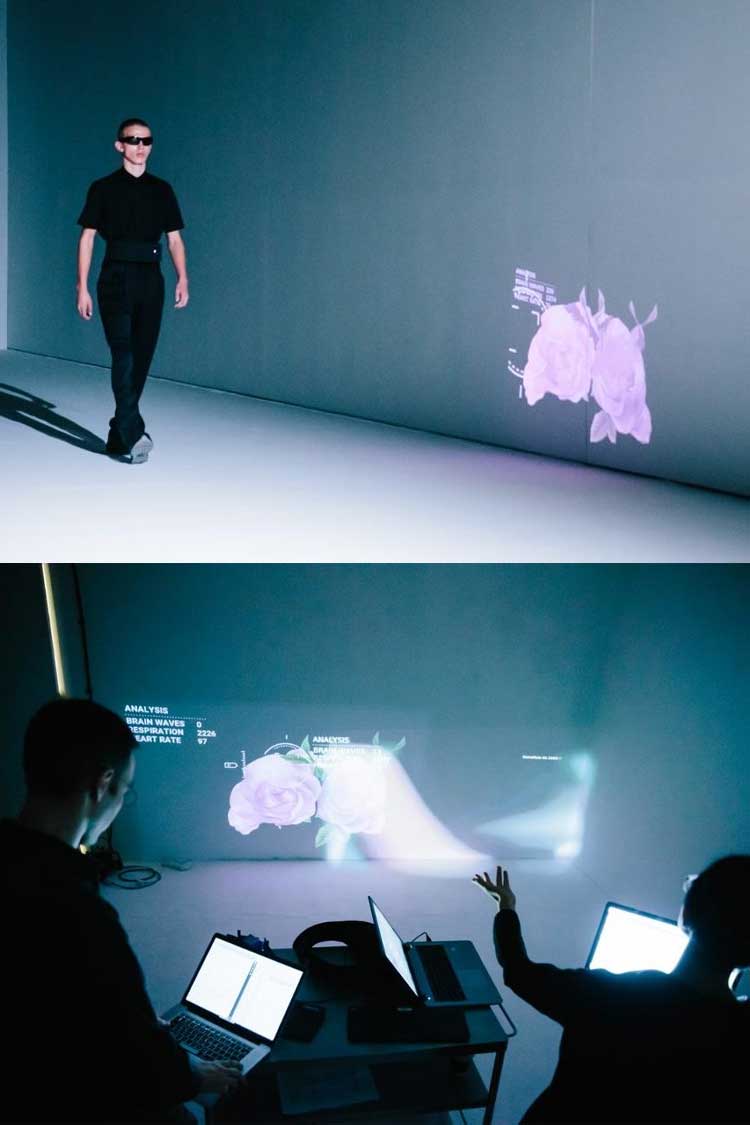
Key Figures in Avant-Garde Menswear
Several designers have made significant contributions to avant-garde menswear, each bringing their unique vision to challenge traditional notions of masculine dress:
Pierre Cardin
A pioneer of space-age fashion, Cardin’s futuristic designs in the 1960s and 70s pushed menswear into new frontiers.
His use of geometric shapes, novel synthetic fabrics, and unconventional silhouettes in men’s clothing laid the groundwork for much of today’s avant-garde fashion.
Cardin’s ‘Cosmocorps’ collection in 1964 envisioned a unisex future for fashion.
Issey Miyake
Miyake’s innovative approach to fabric and form has revolutionised menswear.
His ‘Pleats Please’ line, introduced in 1993, brought a new dimension to men’s clothing with its heat-pressed pleating technique.
Miyake’s ‘A-POC’ (A Piece of Cloth) concept, where entire garments are cut from a single piece of tubular fabric, challenged traditional notions of garment construction.
Yohji Yamamoto
Known for his oversized silhouettes and monochromatic palettes, Yamamoto’s designs challenge Western tailoring traditions.
His work often features asymmetrical cuts and deconstructed elements, redefining masculine elegance.
Yamamoto’s 1983 debut in Paris, featuring models in oversized black coats and trousers, marked a significant shift in menswear aesthetics.
Rick Owens
Owens’ gothic, post-apocalyptic aesthetic has earned him the moniker “Lord of Darkness”.
His menswear collections feature draped fabrics, unconventional proportions, and a subversive take on traditional masculinity.
His infamous ‘step’ teams runway show in 2013 challenged conventional fashion presentations.
Thom Browne
While rooted in traditional tailoring, Browne’s surrealist approach to menswear pushes boundaries.
His shrunken suits and theatrical runway shows challenge perceptions of conventional men’s fashion.
Browne’s signature grey suit, dramatically shortened and tightened, has become an iconic avant-garde reinterpretation of classic menswear.
Rei Kawakubo (Comme des Garçons)
Kawakubo’s work for Comme des Garçons has consistently challenged notions of beauty and function in menswear.
Her ‘Lumps and Bumps’ collection in 1997 featured padded garments that distorted the male form, questioning idealised body shapes in fashion.
Walter Van Beirendonck
As part of the Antwerp Six, Van Beirendonck’s colourful, often whimsical designs push the boundaries of menswear.
His work often incorporates political and social commentary, using fashion as a medium for expressing complex ideas.
Raf Simons
Simons’ work in menswear often draws from youth subcultures and contemporary art.
His oversized silhouettes and graphic-heavy designs have significantly influenced modern streetwear and high fashion alike.
Craig Green
Green’s work often blurs the line between fashion and art installation.
His collections feature conceptual pieces that challenge traditional notions of masculinity and functionality in menswear.
Gareth Pugh
Pugh’s futuristic, often sculptural designs push the boundaries of wearability.
His use of unconventional materials and dramatic silhouettes create a bold vision of future-focused menswear.
Hussein Chalayan
Chalayan’s work often incorporates technology and conceptual elements.
His ‘Remote Control Dress’ and other tech-integrated pieces have expanded the definition of what clothing can be and do.
Jun Takahashi (Undercover)
Takahashi’s work for Undercover often combines elements of streetwear with high concept design.
His collections frequently feature intricate narratives and subversive takes on popular culture.
Boris Bidjan Saberi
Saberi’s work is known for its avant-garde take on streetwear, often incorporating experimental fabric treatments and unconventional proportions.
His designs blend influences from street culture with high-end tailoring techniques.
Kosuke Tsumura
Best known for his brand Final Home, Tsumura’s work centres on the concept of clothing as shelter.
His signature piece, a transparent nylon jacket filled with removable pockets, challenges conventional notions of menswear functionality.
Tsumura’s designs often blur the line between fashion and survival gear, prompting reflection on clothing’s role in modern society.
J.W. Anderson
Jonathan Anderson’s eponymous label has been at the forefront of challenging gender norms in fashion.
His menswear collections often incorporate traditionally feminine elements, such as ruffles, crop tops, and corset-inspired pieces.
Anderson’s work continually questions and redefines the boundaries of masculine dress, making him a key figure in contemporary avant-garde menswear.
Avant-Garde vs Haute Couture in Menswear
While both avant-garde and haute couture represent the pinnacle of fashion creativity, they differ in several key aspects:
Purpose
Avant-garde menswear primarily aims to challenge conventions and push boundaries. It’s often more concerned with concept than wearability.
Haute couture, on the other hand, focuses on creating the highest quality, made-to-measure garments for a select clientele.
Production
Avant-garde pieces may be produced in limited quantities but are not necessarily made-to-measure.
Haute couture, by definition, involves hand-made, custom-fitted garments created for individual clients.
Regulation
In France, the term “haute couture” is protected by law and can only be used by fashion houses approved by the Chambre Syndicale de la Haute Couture.
Avant-garde has no such regulations.
Aesthetics
While haute couture often represents the epitome of refined luxury, avant-garde menswear may intentionally subvert traditional notions of beauty or elegance.
For example, Comme des Garçons’ “lumps and bumps” collection deliberately distorted the human form, challenging conventional ideals of the male physique.
The Impact of Avant-Garde on Mainstream Menswear
Despite its often challenging nature, avant-garde fashion significantly influences mainstream menswear:
Trickle-Down Effect
Elements of avant-garde designs often find their way into ready-to-wear collections.
For instance, the oversized silhouettes popularised by avant-garde designers in the 1980s have become a staple in contemporary menswear.
Changing Perceptions
Avant-garde menswear challenges societal norms around masculinity and dress.
This has paved the way for greater experimentation and self-expression in mainstream men’s fashion.
Material Innovation
The avant-garde’s experimentation with new materials and techniques often leads to innovations that benefit the wider fashion industry.
For example, Issey Miyake’s heat-pleating technique has influenced sportswear and everyday clothing design.
The Future of Avant-Garde in Menswear
As we look to the future, avant-garde menswear continues to evolve:
Digital Fashion
With the rise of digital spaces and virtual realities, avant-garde designers are exploring digital-only garments.
These creations exist solely in virtual spaces, pushing the boundaries of what constitutes “clothing”.
Biomaterials
Avant-garde designers are at the forefront of experimenting with lab-grown materials.
Designers like Suzanne Lee are creating garments from bacterial cellulose, opening up new possibilities for sustainable and innovative menswear.
Wearable Technology
The integration of technology into clothing is likely to become more seamless and sophisticated.
Avant-garde menswear may lead the way in creating garments that respond to the environment or the wearer’s body.
Conclusion
Avant-garde fashion in menswear represents a vital force of creativity and innovation. While it may seem distant from everyday wear, its influence permeates all levels of men’s fashion.
By challenging conventions and pushing boundaries, avant-garde designers pave the way for new possibilities in how men dress and express themselves.
Unlike haute couture, which perfects existing forms, avant-garde menswear reimagines what those forms could be.
It asks us to reconsider our preconceptions about clothing and masculinity.
As we move into an increasingly complex and technologically advanced future, the role of avant-garde in shaping the landscape of menswear will undoubtedly become even more significant.
Whether you’re a fashion enthusiast or simply curious about the forces shaping men’s style, understanding avant-garde fashion offers invaluable insights into menswear’s past, present, and future.
It reminds us that fashion is not just about clothing but about ideas, identity, and the ever-evolving nature of self-expression.
Styling Beyond Avant-garde Fashion
Knowing what avant-garde fashion is and how it is applied in modern styles is a step towards dressing like a successful, confident gentleman, and our men’s styling guides and fashion shopping tips are here to help.
However, to dress like a wealthy and successful gentleman, you must know your body type and unique seasonal colour palette, to select clothes for your specific body shape in colours that match your skin, eyes, and hair.
You must also know which fashion brands to shop from and, more importantly, how to style these garments, footwear, and accessories to create a look of subtle luxury and success.
After learning to choose fashion from heritage fashion brands according to your body shape and colour palette, you’ll have to master styling by occasion, location, season, and even time of day.
If you feel overwhelmed, worry no more – we’re here to help you in three easy and free steps:
1. Find Your Body Type
Different garments flatter different physiques, so knowing your body type is the first step in dressing like a confident man – free body shape quiz for men.
Once you know your unique body type, take the second free quiz to discover your unique colour palette.
2. Find Your Unique Color Palette
Remember, fashion comes in various colours, but not every hue complements your natural colour. Take our free seasonal colour quiz for men to find the most suitable colours for you.
3. Find Your Ideal Fashion Style
By now, you should already know your body type and unique colour palette, so the next step is to discover your ideal personal fashion style.
The fastest and simplest way is to take our free fashion style quiz for men; it includes your ideal style, multiple outfit ideas, the most relevant fashion brands for your unique look, and much more.
4. Professional Image Consultancy with The VOU
Last but not least is mastering how to style according to occasion, location, season, and time of the day; this is where our professional styling services for men, created by our expert image consultants and fashion stylists, come in.
Our paid styling packages are the most comprehensive and detailed on the market. Each is backed up by expert stylists who will guide you step by step in creating a personal wardrobe that communicates affluence, elegance, and endless accomplishments.
Remember, owning luxury clothes isn’t enough; to look stylish, confident, and successful, you must know your body type and colour palette and how to style according to the occasion, location, season, and time of day.
Contact us today and save headaches, time, and money; the first styling assessment is on us!
It’s time to show the world the next you, a confident and successful gentleman of exquisite fashion taste
After years of managing hundreds of fashion brands from London's office of a global retailer, Mandy has ventured into freelancing. Connected with several fashion retailers and media platforms in the US, Australia, and the UK, Mandy uses her expertise to consult for emerging fashion brands create top-notch content as an editorial strategist for several online publications.


